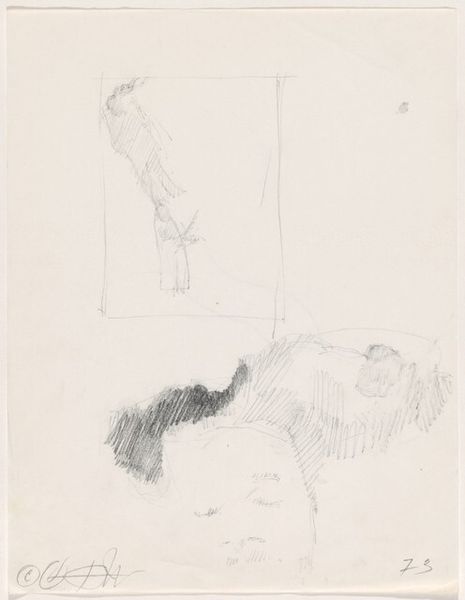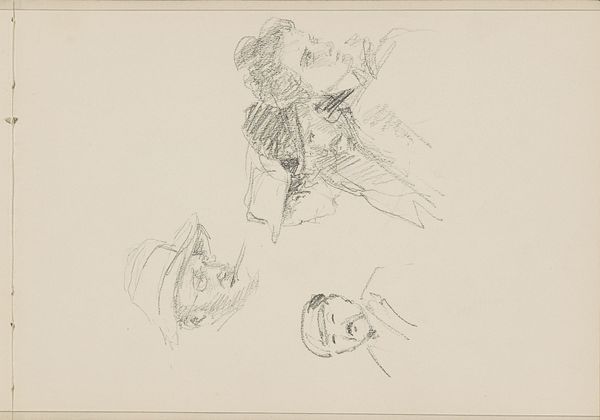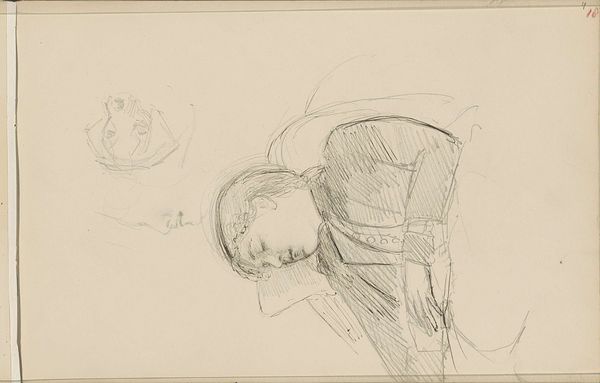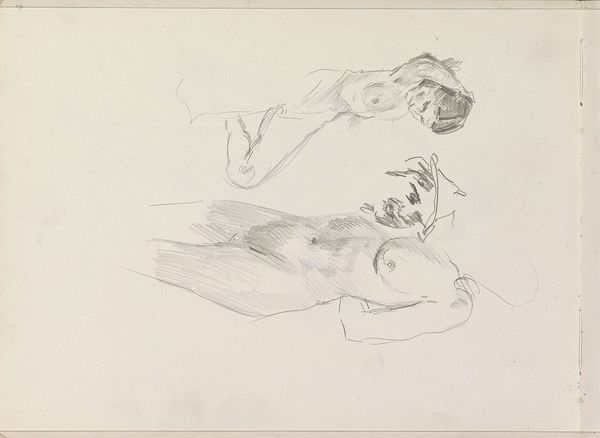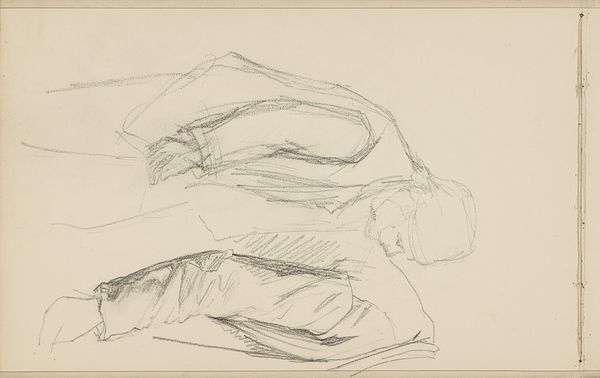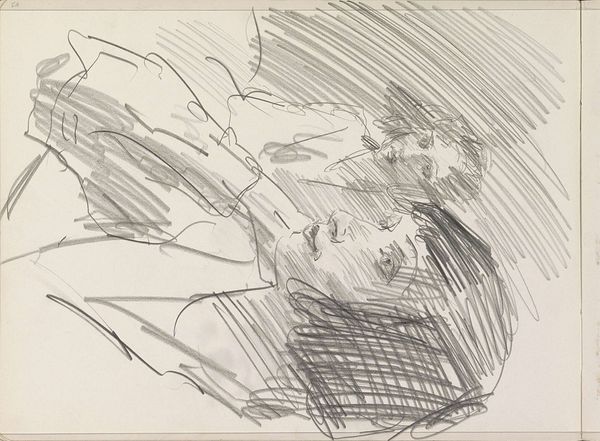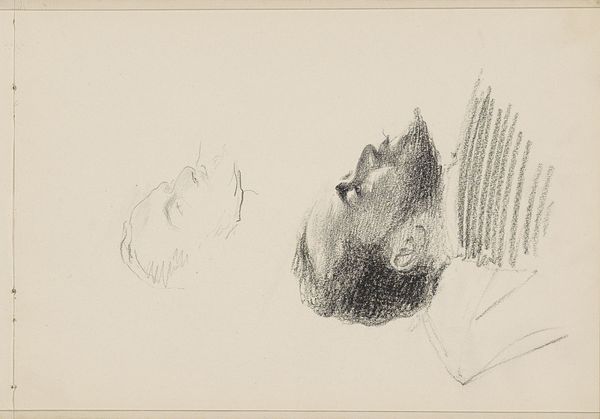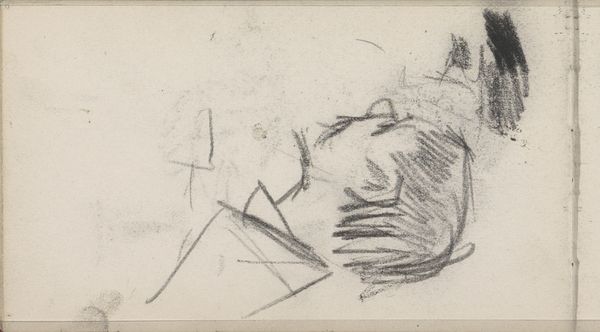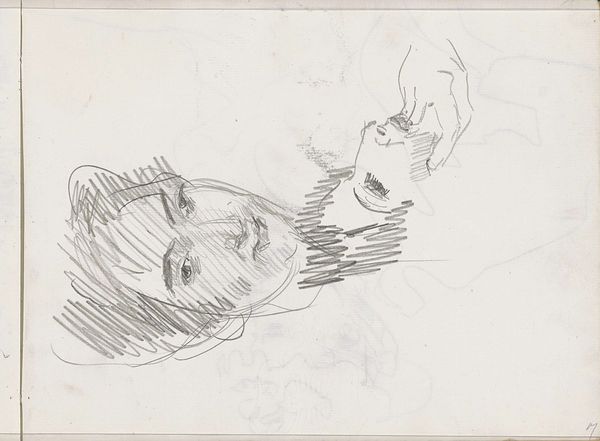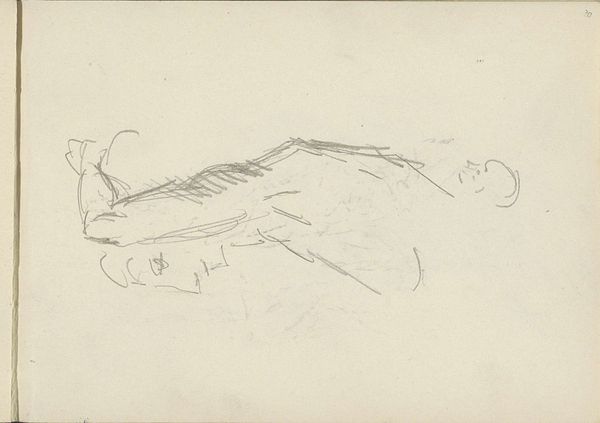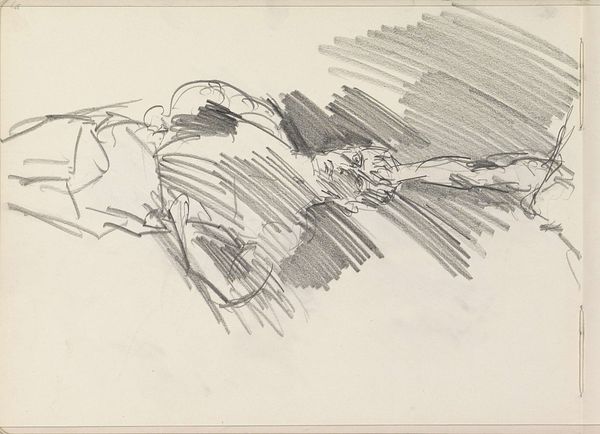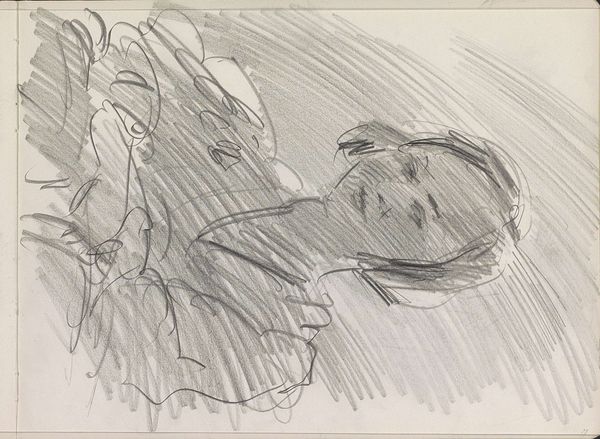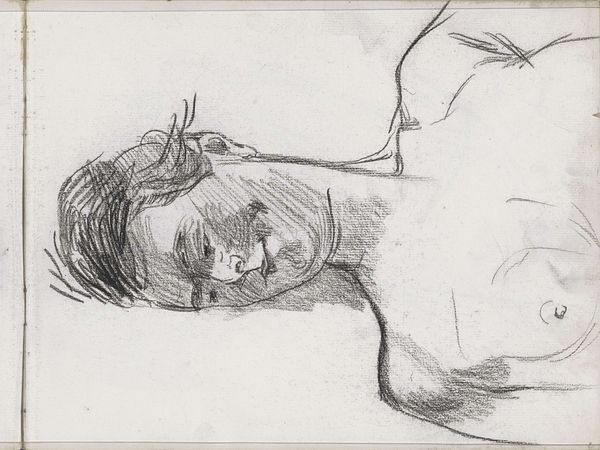
drawing, pencil, graphite
#
portrait
#
drawing
#
figuration
#
pencil drawing
#
pencil
#
graphite
Dimensions: sheet: 21.59 × 27.94 cm (8 1/2 × 11 in.)
Copyright: National Gallery of Art: CC0 1.0
Curator: My first impression is one of introspection, the almost ghostlike rendering lending the subject an air of quiet contemplation. Editor: Absolutely. You see all that graphite smudging, the almost frantic hatching around the figures' heads? There’s something almost desperate about the way Jackson worked this pencil, trying to capture something fleeting. This is "Study for Portrait of Julius Hemphill I" from 1973, by Oliver Lee Jackson. Curator: The double image suggests a mirroring or doubling of the soul, as though Jackson were reaching into Hemphill's interiority. What do you make of that repetition? Editor: It hints at the work being a preliminary sketch, right? You’ve got layering of different levels of finish here—that's what strikes me, the raw quality of the pencil on paper and how it exposes Jackson’s artistic process. Curator: Perhaps, but think about Hemphill, the avant-garde jazz composer. Jackson knew him personally. Isn’t it plausible those multiple images invoke Hemphill’s complex, multi-layered musical compositions? Editor: I see what you’re getting at. There is certainly rhythm, echoes… still, the varying intensity of the pencil work, from nearly invisible outlines to bold shading, highlights for me the very physical act of mark-making, the hand moving across the paper. What paper, even? What pencils did Jackson use to give it all this depth? Curator: Those graphite gradations are powerful. To me they create a visual metaphor for Hemphill’s musical expression, especially his ability to translate deep emotions through sound. It's an intimate glimpse into his persona. Editor: I agree it captures something essential, but for me, that "essential" feeling stems directly from the rawness and immediacy of the drawing. The cheapness of paper and graphite contrasts greatly to the weight of Jackson's work within the AACM. Curator: It certainly highlights the raw emotive state he was attempting to communicate. Seeing this study allows you to appreciate his attempt to unveil inner layers of someone’s artistic self, not simply to create a likeness. Editor: It feels appropriate that the intimacy you are speaking about happened on such readily available, humble materials. It puts their close collaboration into an even brighter light for me.
Comments
No comments
Be the first to comment and join the conversation on the ultimate creative platform.
